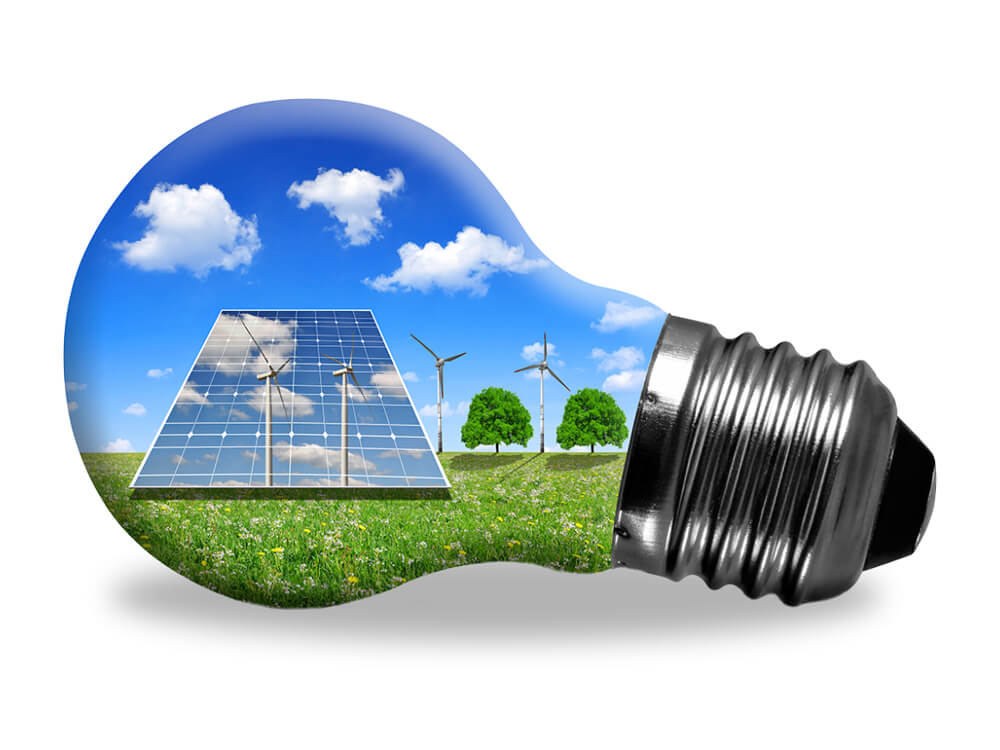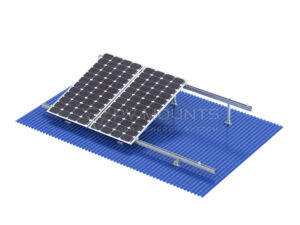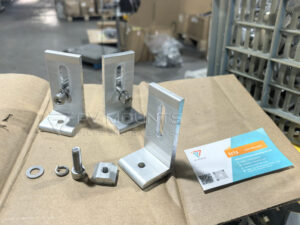Solar energy has emerged as a viable, sustainable alternative to traditional forms of power generation. Ground solar mounting systems play a significant role in this revolution, facilitating the efficient capture and utilization of sunlight. But what exactly are solar mount systems, and why are they important?
Definition of Ground Solar Mounting System
Ground Solar Mounting Systems are structures designed to support solar panels. These systems anchor to the ground and hold the solar panels at an angle that best allows them to capture and convert sunlight into electricity. The efficiency of solar power generation significantly depends on these structures, making them a critical element of any solar power setup.
Importance of Solar Energy
Solar energy is an abundant, renewable resource. Unlike fossil fuels, it doesn’t contribute to greenhouse gas emissions or climate change. By harnessing the power of the sun, we can significantly reduce our dependence on non-renewable resources, paving the way towards a more sustainable future.
Basic Components of a Ground Solar Mounting System
In order to fully comprehend the functionality of ground solar mounting systems, it’s essential to understand their basic components. These systems are comprised of solar panels, mounting hardware, and trackers, each with its own unique role.
Solar Panels
Solar panels are perhaps the most recognized element of any solar power system. These panels house photovoltaic cells that capture sunlight and convert it into electricity. The panels come in varying sizes and capacities, with the most efficient types capable of generating substantial power even in areas with less optimal sunlight.
Mounting Hardware (components)
The mounting hardware serves as the foundation of the ground solar mounting system. This includes structures such as racking and mounting frames which secure the solar panels to the ground. The hardware is usually made of durable materials like aluminium or stainless steel to withstand various environmental conditions. It’s designed in such a way to hold the panels at an optimal angle, maximizing their exposure to the sun.

Trackers(optional)
The third key component of a ground solar mounting system is the tracker. Trackers adjust the orientation of the solar panels throughout the day to follow the sun’s path. This continuous adjustment allows the panels to capture the maximum possible sunlight, greatly enhancing the system’s overall efficiency. Trackers can be single-axis, moving in one direction, or dual-axis, adjusting in two planes for even more precise tracking.
Each of these components plays a crucial role in the operation of a ground solar mounting system. Together, they enable efficient, sustainable power generation that can serve a wide range of applications, from powering residential homes to supplying energy for large-scale commercial operations.
Different Types of Ground Solar Mounting Systems
There are various types of ground solar mounting systems, each designed to meet different needs and circumstances. The three most common types are fixed tilt systems, single-axis tracking systems, and dual-axis tracking systems.
Fixed Tilt Mount Systems
Fixed tilt systems are the most straightforward and commonly used type of ground solar mounting system. As the name implies, these systems are fixed in one position and don’t move to track the sun. They’re generally set at an angle calculated to capture the maximum amount of sunlight over the course of a year. Fixed tilt systems are simpler and less expensive than tracking systems, but they’re also less efficient since they don’t follow the sun’s path across the sky.
Single-Axis Tracking Systems
Single-axis tracking systems pivot on one axis to follow the sun’s movement from east to west during the day. This ability to track the sun increases the system’s efficiency compared to a fixed tilt system. However, it also adds complexity to the system, requiring motors and controls to move the panels and making the system more expensive to install and maintain.
Dual-Axis Tracking Systems
The most advanced and efficient type of ground solar mounting system is the dual-axis tracking system. These systems pivot on two axes, not only following the sun’s path from east to west but also adjusting to its changing position in the sky from season to season. This ensures the panels are always optimally oriented to capture the maximum amount of sunlight. However, dual-axis tracking systems are also the most complex and expensive of the three types.
Choosing the right type of ground solar mounting system depends on a variety of factors, including your geographical location, budget, and energy needs. Each system has its own advantages and trade-offs that need to be carefully considered.
Application Areas of Ground Solar Mounting Systems
Ground solar mounting systems have a wide range of applications, proving useful in various sectors from residential to commercial and utility-scale settings. The adaptability and scalability of these systems make them a preferred choice for diverse energy needs.

Residential Applications
Ground solar mounting systems provide homeowners an eco-friendly energy solution, powering appliances and electric vehicles, reducing electricity bills and carbon footprint, given sufficient backyard space and sunlight.
Commercial Applications
Commercial entities like businesses, schools, and government buildings can benefit from substantial cost savings and achieve sustainability goals by adopting ground solar mounting systems. This commitment to environmental responsibility can also boost their brand image.
Utility-Scale Solar Farms
At the larger end of the spectrum, ground solar mounting systems are the backbone of utility-scale solar farms. These installations can cover hundreds or even thousands of acres, generating enormous amounts of electricity that can be fed into the grid. These solar farms play a crucial role in our transition to a more sustainable energy future, reducing reliance on fossil fuels and cutting greenhouse gas emissions.
Ground solar mounting systems’ diverse applications underscore their potential in advancing renewable energy adoption. As technology evolves and costs drop, their future prevalence is anticipated to increase.
Factors to Consider When Implementing a Ground Solar Mounting System
When planning to implement a ground solar mounting system, several key factors need to be taken into consideration. These include site evaluation, system size, and local regulations and permissions.
Site Evaluation
1. Sunlight Availability
A critical factor in site evaluation is sunlight availability. The area should have ample sunlight for a significant part of the day to maximize energy production. Seasonal variations in sunlight should also be considered when planning the layout and orientation of the system.
2. Soil Type
Soil type is another important consideration during site evaluation. The type of soil can impact the design of the mounting system and the type of foundation used. Some soils may require additional reinforcement or alternative installation methods to ensure the stability of the system.
System Size
The size of the system will depend on your energy needs and the amount of space available for installation. This will influence the number of panels, the type of mounting system, and the cost of the installation. It’s important to strike a balance between meeting your energy requirements and staying within your budget.
Local Regulations and Permissions
Before starting the installation process, it’s important to understand and comply with local regulations and obtain any necessary permissions. These can include building permits, grid interconnection approvals, and environmental assessments. Ignoring this step can result in legal issues and delays in your project.
By carefully considering these factors, you can ensure a successful and efficient implementation of a ground solar mounting system. It’s always recommended to seek advice from professionals in the field to make the most informed decisions.
You can find what excat permissions needed: PERMISSIONS
Benefits of Ground Solar Mounting Systems
Adopting ground solar mounting systems comes with a multitude of benefits, which include energy efficiency, cost-effectiveness, and positive environmental impact.
Energy Efficiency
Ground solar mounting systems, particularly those with tracking capabilities, can harness solar energy more efficiently. They can be placed at an optimal angle and, in the case of tracking systems, follow the sun’s path to maximize energy capture. This efficiency translates to a higher electricity output and less reliance on traditional power sources.
Cost-Effectiveness
Though the initial setup costs can be significant, ground solar mount systems prove cost-effective over time. The sun provides an unlimited, free source of energy, resulting in lower utility bills. Moreover, maintenance costs for these systems are typically low, contributing to long-term savings.
Environmental Impact
The environmental benefits of ground solar mounted systems are compelling. Solar energy is clean and renewable, unlike fossil fuels, which emit greenhouse gases contributing to climate change. By transitioning to solar energy, we can reduce our carbon footprint and move towards a more sustainable future.
The advantages of ground solar mounting systems make them an appealing choice for a diverse range of applications, from residential properties to large-scale solar farms, bringing us a step closer to a world powered by clean, renewable energy.
Future Trends in Ground Solar Mounting Systems
Looking ahead, the ground solar mounting systems industry is poised for further innovation and growth, driven by technological advancements and promising market predictions.
Technological Advancements
In terms of technological advancements, the development and refinement of solar trackers is a key trend. These devices enhance the efficiency of solar panels by adjusting their position to follow the sun throughout the day. Innovations in materials and designs are also expected, aimed at improving durability, efficiency, and ease of installation.
Furthermore, the integration of solar systems with smart grid and energy storage technologies shape the future of this sector. These advancements will allow for better management of power generation and storage, ensuring a consistent energy supply even during non-sunny periods.
Market Growth Predictions
The global market for ground solar mounting systems is predicted to grow substantially in the coming years. This is a rising demand for clean energy, declining costs of solar installations, and supportive government policies around the world. We expect robust growth in utility-scale solar projects due to their capability to produce power at a relatively low cost.
Conclusion
Ground solar mounts systems are vital to our shift towards renewable energy, given their wide-ranging applications and significant cost benefits. They bolster sustainability efforts by reducing reliance on traditional energy sources and curbing greenhouse gas emissions.
Looking ahead, technological advancements and market growth amplify their importance. Integration with technologies like smart grids will revolutionize power generation and consumption.
Given these advantages and future trends, ground solar mounted systems will continue to play a critical role in our energy landscape, warranting further development and adoption for a sustainable, clean-energy future.













